For a new brewery to have a solid chance at success, it needs to be strong on both the brewing side and the business side.
Many a naïve brewer has received a harsh slap from reality when they start a new brewery. They’ve got the beer side of things nailed down, but they discover the importance of the business side of running a brewery – like securing a location, admin, marketing, distribution – and how hard it is to build this all from scratch.
On the flip side, there are breweries started by business folk who enter the industry thinking their keen business know-how will carry them… only to discover they haven’t given enough priority to the beer side of things.
New enterprise Boxer Brewing (named for the dog, not the fighting sport) seems to have both sides covered. On the business side, it’s owned by the team behind Witches Falls Winery, a thriving winery in a gorgeous location with business infrastructure and systems already in place. On the brewing side, it’s headed by Johann van der Walt, the respected brewer who helped steer Green Beacon to greatness. By all accounts, it seems that the pieces are there to make a successful brewery.
As my good friend Hannibal Smith likes to say: “I love it when a plan comes together.”
The Business Side
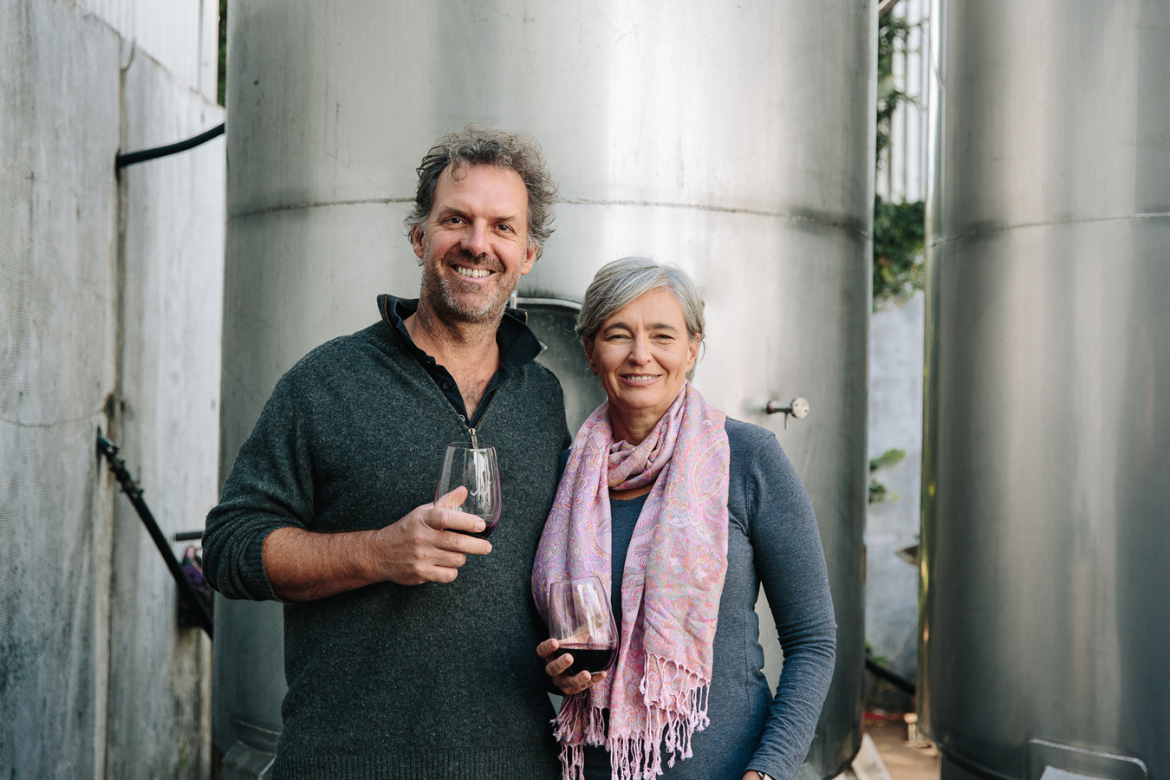
Opening in mid-2023, Boxer Brewing is in the process of being built on the same site as Witches Falls Winery on Mount Tamborine. Like its grape-based neighbour, Boxer is owned by Jon and Kim Heslop, who established Witches Falls in 2004.
(If the name Heslop sounds familiar, you might know Jon and Kim’s daughter Abby. As well as being a fully qualified winemaker with a degree in viticulture and oenology, Abby brews at Sea Legs and is currently working on her masters in brewing. This is a family who knows how to make good grog.)
With almost 20 years of running a booze-making business under their belt, Jon and Kim are building Boxer on a firm foundation. While many new breweries have a difficult job setting up the business side, Boxer should be able to hit the ground running in most areas.
From the necessary bits and pieces behind-the-scenes: “As far as a business is concerned,” Jon says, “we’ve got all the background infrastructure: systems, accounts and marketing, everything all in place.”
To a sizeable platform for reaching potential customers: “In the winery, we have a very strong members’ club; we’ve got ten or eleven thousand people on our database. Obviously everybody on that database will know about the brewery. We’ve had a lot of people who have been with us for a really long time, who are really loyal.”
To a site that already sees a huge number of visitors: “The taproom’s going to be really vital… We get eighty to a hundred thousand people through [the winery cellar door] every year. It’s incredible. Weekends are packed. It’s a ready-made market.”
To a desire to keep control of how their product is handled: “We do the majority of our own distribution as far as wine’s concerned, so it won’t be any different for beer. The more that we can do ourselves to ensure that the highest quality product reaches [people] in exactly the way Johann wants them to be drinking it, the better.”
And it’s not all logistics; the location of the brewery is one of its greatest strengths. Mount Tamborine as a whole is a lovely place, and Witches Falls Winery itself oozes charm. Between the serene vibes of sprawling greenery, the gorgeous mountaintop views and the aesthetic rows of grapevines, Boxer is set to be a destination you want to visit as often as you can.
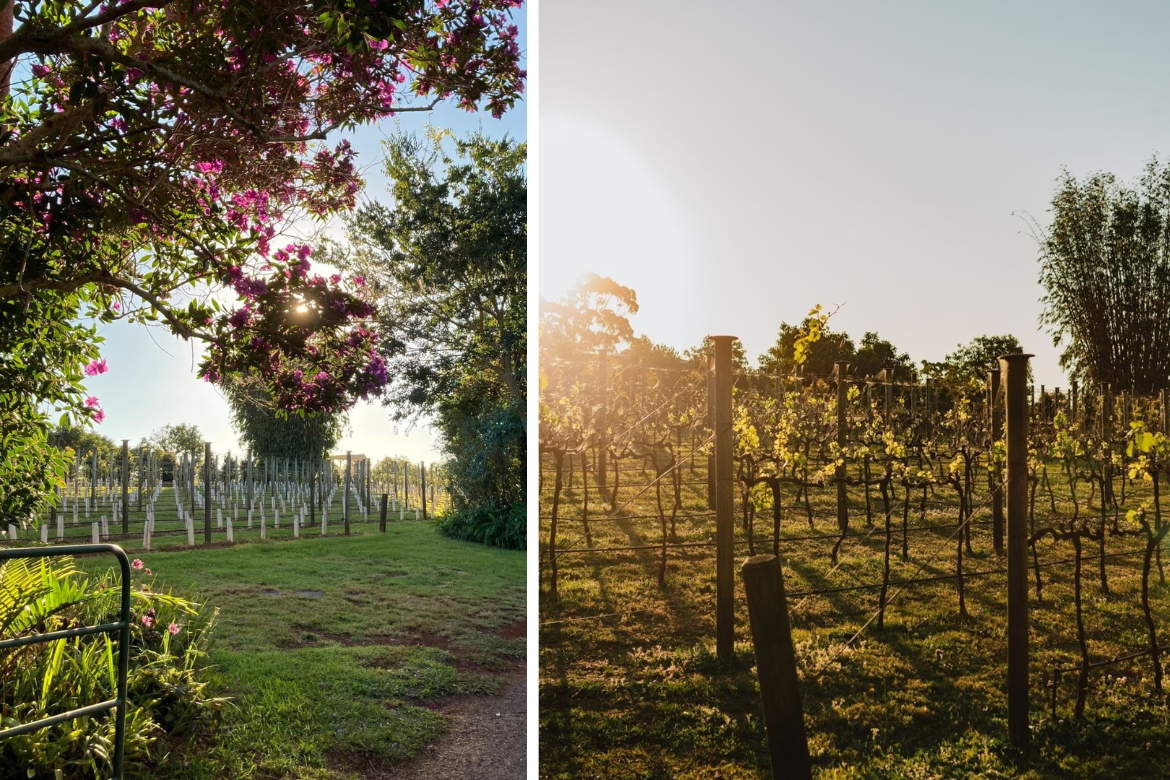
The Brewing Side
Of course, all of this would mean nothing if they didn’t take the brewing side of things seriously. While the owners are winemakers, not brewers, they have a strong philosophy for how to make quality booze.
“From a winemaking point of view and a beer making point of view, the way I see it, it’s exactly the same,” Jon says. “The yeast and the microbes are the ones doing all the work. We’re just custodians. We’re here to help them along the way, to get the best outcome without us screwing it up along the way.”
Jon knew they needed to find the right person to be custodian in the brewery if they wanted to reach the high bar they’ve set for their beer at Boxer. And early on, he set his sights on Johann van der Walt who you may well know as the brewer who stood at the helm of Green Beacon. As head brewer there for almost a decade, Johann deserves no small amount of credit for leading Green Beacon to collect several trophies for being champion brewery in its size category.*
However, the first conversations between Jon and Johann weren’t about a job, but about brewing equipment. Jon asked Johann for his advice on what kind of brew kit he should buy for Boxer, then went and ordered a 25 hectolitre brewhouse from Premier Stainless according to Johann’s recommendation. It was only after this that he asked Johann if he wanted to chat about coming to coming to brew for him.
Johann says: “I wanted to move on from Green Beacon, and I talked to a lot of people, and a lot of them you could see they were going to do it half-assed. And I did make the promise: I’m not going to leave Green Beacon for somebody if they’re going to do it half-assed. I want to do something right.
“And I realised with [Jon]: he’s not going to do it half-assed. He could’ve bought a pretty cheap Chinese kit if he wanted to, but he didn’t – he went with the kit that I want. Everything that I wanted, he said, ‘Yep.’ And I thought, ‘This guy’s serious. I’d be crazy not to do this.’”
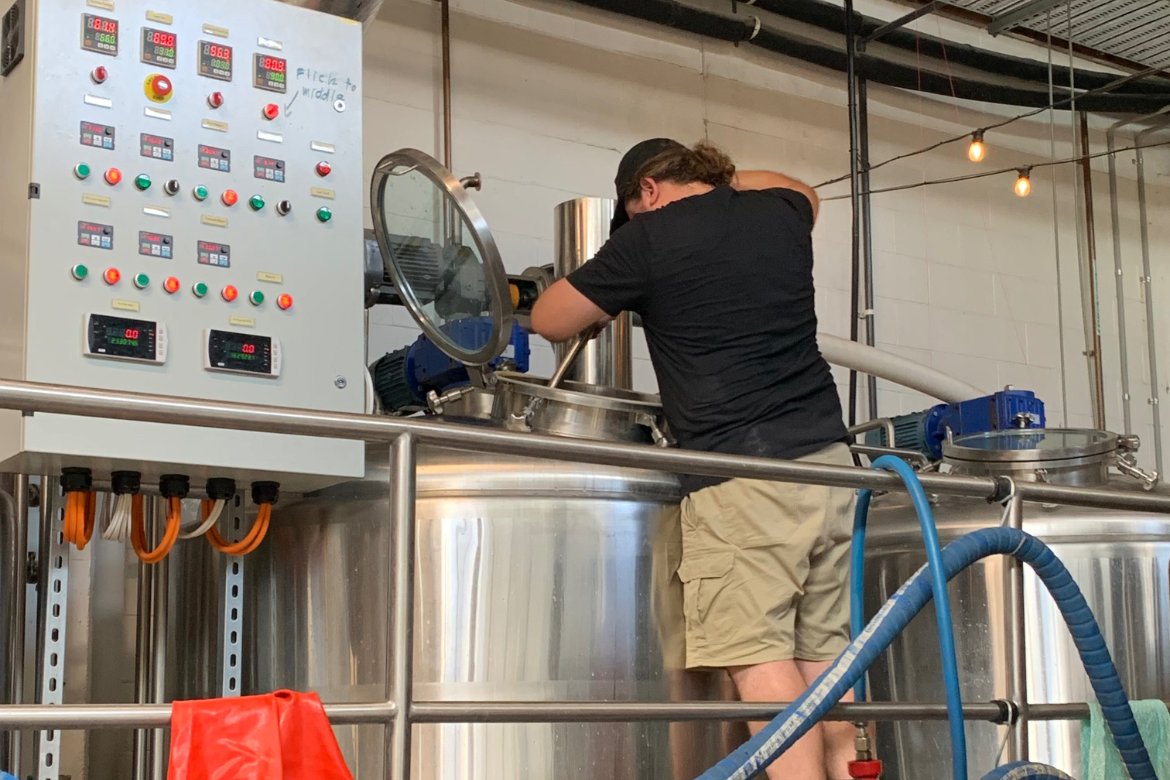
Another drawcard for Johann to move to Boxer was the chance to work in a smaller, family-owned brewery where he could shorten the gap between brewer and drinker. He says while he appreciated experiencing working in a larger, more complex brewery, the reality was that was that once the beer left his hands, he had no say over where it went and what happened to it, and it wouldn’t always reach the end consumer in the condition he wanted.
“I wanted to see all of that, and see how it works, and I’m really glad I saw that. But now… I really want to be more a part of a smaller brewery, where you’ve got full control of your product.
“That’s always been my thing: to make something, to give it to somebody, and say, ‘What do you think of that?’”
The Boxer taproom is set to be a place not only where people can drink the beers, but also where people come to learn about the beers and the brewing process. While brewery taprooms have come to be often positioned largely as venues for your average punter, winery cellar doors have a long history of being primarily an educational experience with tastings and tours. Jon’s plan is for the Boxer taproom to pick up that winery cellar door DNA and be more educational than your average brewery taproom.
Jon says: “All of the people who work the [Witches Falls] cellar door are really well-trained insofar as the wines, where they’ve come from, the processes and whatnot. We want the same kind of things to occur in the taproom.”
As well as covering the styles and brewing process, this education will include the distinctiveness of Boxer and its location. The brewery will source various local ingredients for their limited release beers, and for all of their beers Mount Tamborine itself provides a key ingredient: pure spring water coming from underground aquifers.
“We’ve got unbelievably good water to start with for the beer,” Jon says, before adding with a smirk, “which I understand is pretty important.”
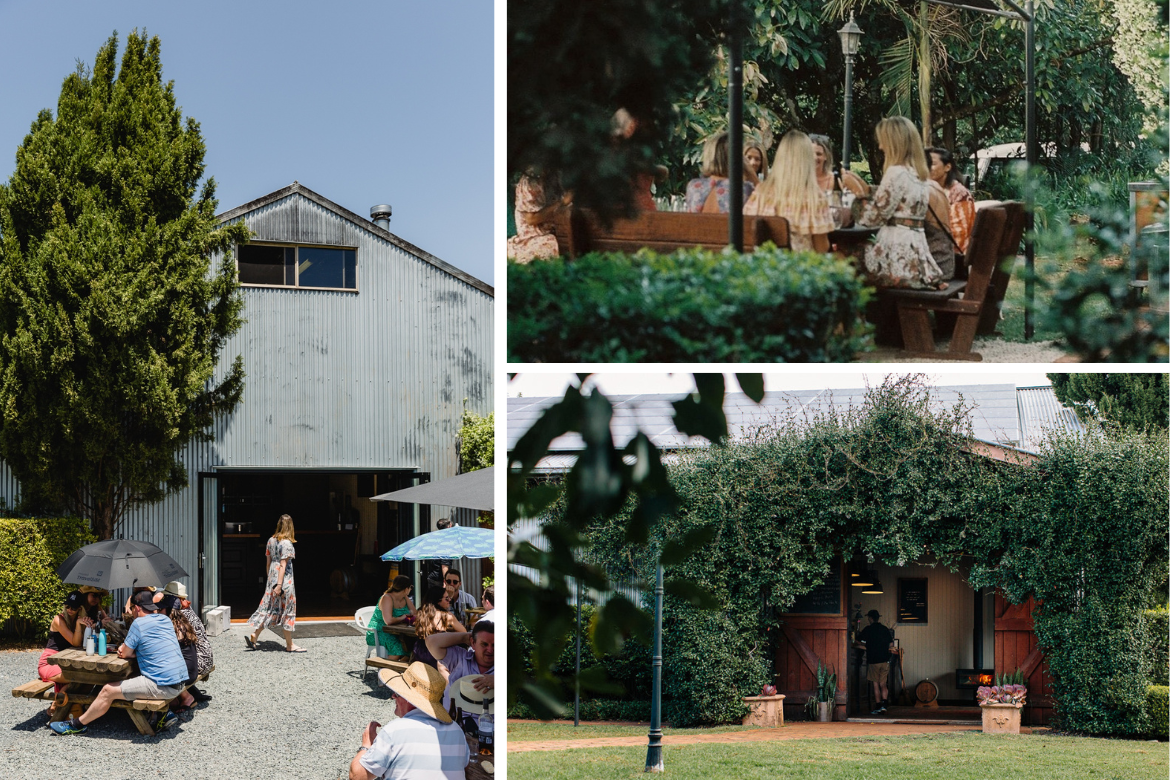
The Brewer and the Winemaker
While Boxer will focus on getting their core range of beers up and running before venturing into too much experimentation, an interesting distinctive of Boxer is the opportunity to share knowledge, equipment, processes, and flavours between the brewery and the winery.
“What I’m excited about is: have this beer world, have this wine world, and have a little bit of overlap in between,” Johann says.
“I’ve tried some [beer-wine hybrids], but now I’m at a place I have direct contact, with grapes coming in and knowledge from the winemakers.”
The chance to make beer-wine hybrids with grapes grown on site is only one part of the equation. Beyond this, there’s a broad horizon of ways the brewing and winemaking spheres can cross over. One possibility that caught Johann’s attention is the sharing of equipment that many brewers don’t normally have access to in order to make some traditional and experimental styles of beer.
Jon is only too happy to oblige.
“Beer brewing is throughout the year, where… some of the [winemaking] equipment, we really only use in that February through May period when the grapes are coming in,” says Jon.
“That’s where Johann’s eyes have lit up – he’s seen some of it and gone, ‘Oh, so I can use that the rest of the time?’”
Johann’s excitement is indeed palpable when he dreams about the possibilities.
“I see so many bits and pieces, and think, I want to be using that!
“I saw those 2000 litre stainless tubs on my second week here. I looked at them and thought ‘Oh my God. Look at those.’ The first thing I thought is that we can do an open fermentation, you know, the old English ales – a really old school beer. You can do a stout, you can go into the mixed fermentation type things, you can do a bit of an open fermentation there for a bit and then move it into barrels…”
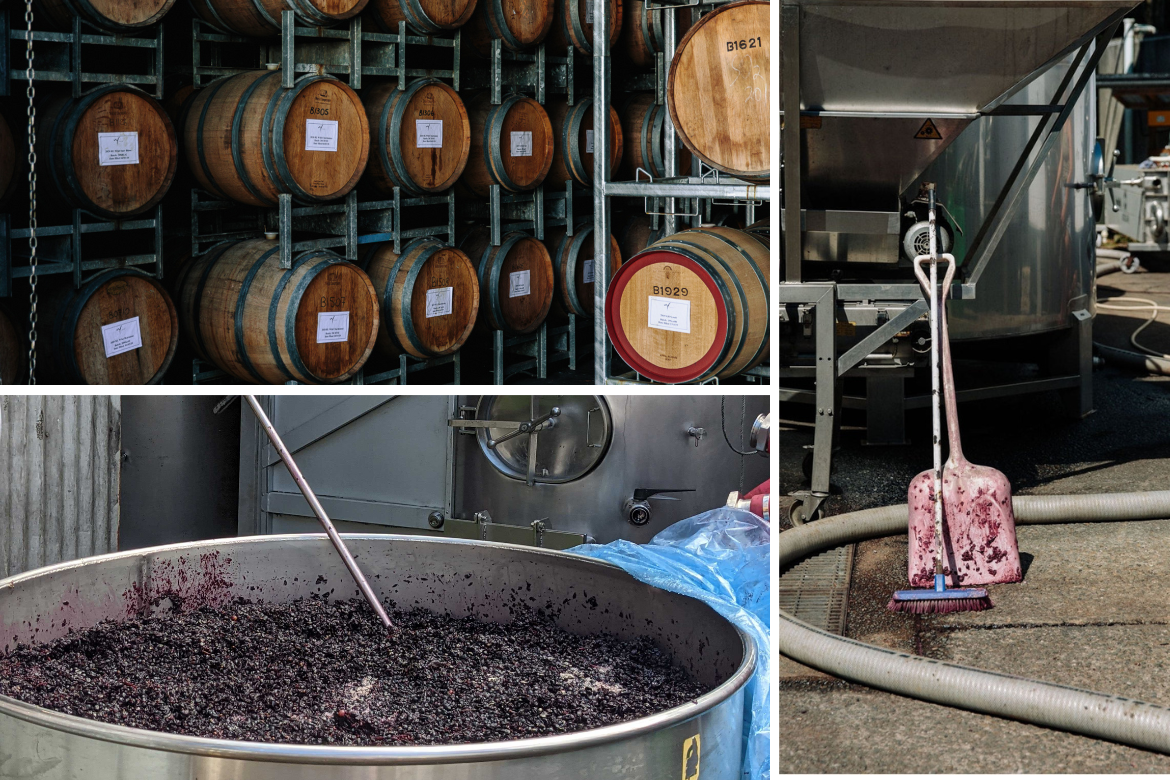
Even though it will only be a limited part of Boxer’s offering and won’t be straight away, Johann’s already started to make plans for the ways he can play with the new toys to make all kinds of creations.
“I’m looking forward to doing IPAs and lagers, but I can’t wait to go back into the barrel beers again. Make wild fermented beer as well.
“There’s another square [vessel], looks almost like a coolship. I’m thinking of during winter, taking off 1000 litres of a brew, wheel it out on a really cold winter’s night, bring it in, get a fermentation happening in some of the barrels. That’s the plan. Probably next year we can do that.”
Not all of the ways the brewery and winery side interact will result in different beer styles; some will be less tangible, but still have a significant effect behind the scenes. When a brewer and a winemaker rub shoulders, they impart knowledge to each other that may not always be evident to the consumer, but grows the skillset of the respective experts.
As a working example, Jon says he and Abby sometimes share ideas with each other between the brewing and winemaking world.
“Every couple of months, Abby rings me up, and she’ll say, ‘Hey Dad, in the winery, what do you use for this?’ or ‘Do you think this’ll work?’”
Johann is also glad to be able to draw on Jon’s and the other Witches Falls winemakers’ expertise as a resource.
“They work with a different fermentation than the brewers do. If I can get that knowledge and implement that with the brewing side of things, that can only be a positive.”
He discusses the different nutrient requirements of wine yeast versus brewers yeast, and especially the way these need to be addressed in any beer that includes simpler sugars (such as those in grapes).
“The winemakers work with a product that’s so deficient of nutrients… if you’ve got an all malt beer, it’s all there. But if you start playing [with other sugars] in conjunction with beer, that’s when the yeast starts going, ‘Hey, what’s going on here?’
“How do you manipulate a particular yeast to do what you want it to do, for clean fermentation, or for bringing out more fruit?”
He looks to the introduction of Phantasm, a new brewing product that uses sauvignon blanc grape skins to boost some of the fruity aromatics in hops, as another example of the benefits of the interdisciplinary approach.
“That’s the stuff [winemakers have] done for ages, and we’re starting to learn from them now.”
The Story of the Brewer

Despite the fact that The Crafty Pint has been around for the length of Johann’s career in brewing, we've only ever covered a tiny portion of Johann’s story before now. It’s common knowledge that Johann was at Green Beacon for almost ten years before moving to Boxer. But how did he get there?
Perhaps it’s best to hear from his own mouth…
Discovering beer in South Africa
“I grew up in South Africa. My dad was a butcher, so I think I got my love for cooking and making from my dad. He always makes salamis, and stuff like that. I moved out of home and went to go study dental technology. I’d be on the phone to him: ‘How do you cook this?’, and ‘How do you cook that?’, and over the phone he’d tell me.
“Back then, there was no craft beer [in South Africa]. You couldn’t home brew – it was illegal. There was one very small craft brewery; I think their name was Mitchell’s. And that was it. Nothing else. But you could get Windhoek that came in from Namibia. All South African beer was made to very American-type lagers: lots of corn syrup (maize in Africa). The first time I tasted Windhoek I was blown away. It was more malty, more hoppy. They brew it to the German purity laws. And I really liked that.
“Then of course Castle also made a milk stout. I started drinking the milk stout and I thought, ‘This is amazing.’ Back in Apartheid, white people didn’t want to drink it; they said it was only for black people. Some people pointed out and said, ‘You shouldn’t be drinking that.’ I’m like, ‘Well, I can drink it. And I want to drink it.’ It was delicious!
“That was the start for me of realising there are different beers.”
Broadening horizons in UK and Europe
“The biggest change would be when I moved to the UK. I wasn’t big into the English ales, because they were extremely bitter to my palate. I was used to lagers. Wherever we travelled around Europe, I would always go and find different lagers.
“Then one day in the UK, I saw this big champagne-type bottle, and it was in between beer. It was Leffe. I thought, ‘What is this?! Strong Belgian beer, six percent. I want to try that!’ Tried it, and I was blown away. I saw a similar bottle, same size: Hoegaarden. Tried this, was even more blown away!
“That was for me the start of going to Belgium to taste all the beers there, then I started from there going into the ales, and I started realising how good English ales are.
“But this is all happening while I met my wife; she’s from Australia. She saw that I love beer and she said, ‘Oh yeah, my grandad makes his own beer.’ And I’m like, ‘What?! He makes his own beer?! When I get to Australia, I’m going to make my own beer.’”

Home brewing in Australia
“Got to Australia, two weeks later I bought my first home brew kit, and I brewed my first lager, fermenting at 35 degrees in the shed. Didn’t drink it. But from there, that’s how it all started.
“Back then, there was no real things on the internet about home brew. You just had to work stuff out yourself. Then Ross Kenrick started CraftBrewer, and he was one of the guys first in on that [all grain home brewing] space. He would buy five kilo bags of hops and split it up. Nobody really did that. He made it more accessible.
“And then I got really obsessed with making my own beer. In the meantime, I had a full-time job as a dental technician. That was my bread and butter… but I always knew there’s something more for me. What is my purpose in work?
“I’ll never forget there was one night, I had a few beers and sat there and all of a sudden: ‘I want to become a brewer. This is what I want to do with my life.’ And I just felt relief, it was an amazing feeling.
“And then of course I started feeling, ‘Shit. How am I going to do this?’”
Getting to Green Beacon via India
“Started going to home brew clubs just to get into meeting more people, and entering beers. I put my hand up and asked Ross Kenrick and I started working at CraftBrewer every Saturday: packing hops, packing yeast in bags, and so forth.
“And then Ross bought Bacchus, and he said, ‘Do you want to start making beer there?’ So I was the first brewer there. Did that for a bit, and then I got a job with Brisbane Brewing Co, and I was there for two or three years.
“While at Brisbane Brewing Co, I heard that Green Beacon had started. I called up Andrew Sydes – the two of us used to work together at the home brew shop – and said, ‘Did you see that they’re looking for a venue manager?’ So he got in with them. And then he introduced me, because when I first saw Green Beacon, I said, ‘This is where I want to work.’ There was no position available, because back then the two owners were still the brewers. At the same time I also approached Ian Watson and asked him for a job at Fortitude, but there was nothing available.
“And then the job came up for a brewery looking for an Australian to help them set up a brewery in Bangalore, India. So I thought, ‘Maybe I’ll do this.’ We had a one-year old. I spoke to my wife, and said, ‘How about I go check it out and if it’s good we’ll relocate there for a bit.’ So I did that, I was there for a bit, and then we decided it’s not going to work out.
“[But Andrew] called me up in India and said the owners [of Green Beacon] want to talk with me because they need a brewer. I said yep. And then Ian Watson called up, and I said I’m already talking to the guys at Green Beacon.
“So then I went back. That was over nine years ago last August I started there. I was the second full-time employee, first brewer they had. And then I became the head brewer looking over that, I redesigned all the recipes, and it just went from there. Long story, but that’s how it started.”

Back to the present day
“Then, of course, Jon and I started talking…”
And the rest is history. (Well, history according to this article.) A lot happened between when Johann had his first Windhoek Export lager and discovered beer made with water, malt, hops and yeast and when he made his way up Mount Tamborine to the site of Boxer and got excited by the wine barrels and open fermentation tubs.
But for Johann, it’s all about looking forward now.
“Pretty excited about the next phase. I’ve seen the other side of it. I know what I want, how I want to do it, what size I want to do. If we get big, I want to follow the right steps to get there.”
And the owners of Boxer are confident they chose the right custodian.
“The more I get to know him,” Jon says, “I’m even further convinced he’s absolutely the right person to be heading things up here.”
Boxer Brewing is planning to open in mid-2023.
Photo credit to Sabine Bannard (@_housefrau) for the pictures of Jon and Kim and the green front of the cellar door.
*2016 Champion Medium Brewery (Craft Beer Awards); 2017 Champion Small Australian Brewery (Australian International Beer Awards); 2018 Champion Medium Australian Brewery (AIBAs); 2019 Champion Medium Australian Brewery (AIBAs)

















